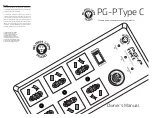
Discover the Universe!
Welcome to the amazing world of astronomy! Astronomers spend their time
discovering the nature of space and everything in it. As big as our planet Earth is, it is
just one of eight planets orbiting the sun, which is just one of billions of stars in our
home galaxy, the Milky Way, which is just one of billions of galaxies in the universe. So
you can see that it will be a long, long time, if ever, until astronomers run out of things
to discover!
Your Own Planetarium
Have you ever been to a planetarium show? Do you remember when you sat back and
saw the night sky projected by a huge star projector, while the astronomer guided you
on a journey through space and time? Remember how much fun and how interesting
that show was? Your planetarium does much the same thing, right in your own room.
Your planetarium allows you to...
• Project stars, outlines of the constellations, and their names on the walls and
ceiling all around you
• Project the night sky for any season or month of the year with its one-piece
fully-integrated star sphere — no separate overlays to break or lose
• Accurately project the night sky by date and hour
• Project the night sky in its correct directional orientation
• Treat yourself and your friends to an exciting sight and sound tour of the night sky.
With your planetarium, you will learn the locations of the brightest and easiest-to-find
constellations, stars, and planets. By taking the tour and reading this guide, you will
come away with a good understanding of the night sky.
What Is a Constellation?
If you look at the stars in the night sky long enough, you will notice how groups of
stars form familiar objects, something like connect-the-dots pictures. Many centuries
ago, people who gazed at the stars noticed pictures out there— and gave names to
them. This helped them create a “map” of the night sky, making it easier to locate the
stars.
But these figures are not really sitting out there in space. They are only imaginary
patterns created by the relative positions of the stars as we see them from Earth. Some
stars that appear to be right next to each other are in fact very far apart. They just look
close together from where we are looking at them on Earth. If you could somehow see
the night sky from another part of the galaxy, the relative positions of the stars would
be completely different and you would be able to discover totally new constellations.
3
































